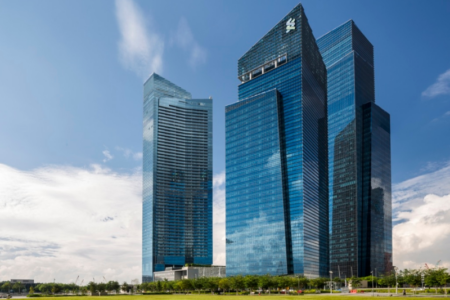REITs have been a resilient asset class that continues to dole out steady distributions despite the twin challenges of high inflation and surging interest rates.
One of the methods used by REITs to grow their assets and distribution per unit (DPU) is acquisitions.
High interest rates, however, make acquisitions tougher as REITs need to find suitable assets with a net property income (NPI) yield higher than their cost of borrowing.
Despite this difficulty, several REITs have announced acquisitions of late.
Mapletree Logistics Trust (SGX: M44U) announced the acquisition of eight properties in three countries while CapitaLand Ascendas REIT (SGX: A17U) recently purchased The Shugart, a high-specification research and development facility.
Now, Mapletree Industrial Trust (SGX: ME8U), or MIT, has joined in with its first acquisition in two years – that of a data centre in Osaka, Japan.
Here are five things that investors need to know about this transaction.
1. Growing its portfolio further
MIT is forking out around S$500.1 million to acquire a 98.47% effective stake in the data centre.
The property sits on a land tenure of 70 years from 1 October 2020 with approximately 136,900 square feet of net lettable area.
The completion date for this acquisition is expected by the third quarter of this year.
With this acquisition, the industrial REIT marks its maiden foray into Japan and its portfolio’s assets under management (AUM) will grow from the current S$8.8 billion to S$9.3 billion upon completion.
Post-acquisition, data centres will make up 56.3% of the REIT’s AUM with Hi-Tech Buildings making up the second-largest component at 16.4%.
By geography, Japan will make up 5.5% of AUM with Singapore at 46.9% and the US at 47.6%.
2. Improving the REIT’s operating metrics
This acquisition will also improve several of MIT’s operating metrics.
The Osaka data centre has a weighted average lease expiry (WALE) of around 20 years, thereby lifting the portfolio’s WALE from 3.9 years to 4.5 years.
Also, the proportion of leases expiring in fiscal 2029 (FY2029) and beyond will increase from 28.1% to 30.5%.
MIT’s portfolio will also become slightly more diversified among three countries rather than just two.
Meanwhile, MIT’s tenant base will see a further reduction in concentration, with the largest tenant, HP Inc (NYSE: HPQ), taking up 5.7% of gross rental income (GRI), down slightly from the 5.9% recorded pre-acquisition.
The tenant for the Osaka data centre, an established data centre operator, will also see its GRI contribution rise from the current 0.7% to 4.3%.
3. Acquisition funded via a combination of debt and equity
The REIT will fund the acquisition with a combination of debt and equity.
MIT will take on additional debt of S$310.2 million with a Japanese Yen loan to partially finance the purchase.
The REIT estimates that its pro forma aggregate leverage will rise from 37.4% to 38.7%.
The remaining S$195.7 million will be funded via proceeds from a private placement of new units.
A total of 92.593 million new units will be issued at an issue price of S$2.212 per new unit to raise gross proceeds of around S$204.8 million.
4. Boosting its DPU and NAV
This acquisition is also good news for income-seeking investors as it will result in an increase in DPU for MIT.
The REIT estimates that its FY2023 DPU will rise by 2.1% from S$0.1357 to S$0.1385.
At the current unit price of S$2.27, the REIT’s units will have a forward distribution yield of 6.1%.
MIT’s net asset value (NAV) will also inch up slightly by 0.5% from S$1.85 to S$1.86.
5. Favourable economics for future growth
Japan is one of the most developed data centre markets in the Asia-Pacific region.
The bulk of data centres within the country are concentrated in Tokyo (77%) and Osaka (21%).
There are plenty of drivers to ensure data centres remain in high demand for many years to come, such as the deployment of 5G, increasing cloud adoption, the boom in online gaming, and rapid digitalisation by businesses.
The data centre take-up rate is projected to increase by 14% per year from 2023 to 2027 in Osaka, providing sustained growth potential for the REIT.
In addition, Osaka’s usage of data per capita is just 73.4 MW per million, 60% below Tokyo’s 184.5 MW, according to a Japanese data centre market report and the Statistics Bureau of Japan.
Because of this, management believes that there is ample room for further growth as the data centre market continues to develop.
Is it a good time to buy into Singapore REITs? If you’ve thought about it, then our latest REITs guide will be an essential read. This exclusive pdf report shows you why REITs are still excellent assets, what sectors to look out for and how to find good REITs today. The info inside can help you build a solid retirement portfolio. Click here to download it for FREE.
Follow us on Facebook and Telegram for the latest investing news and analyses!
Disclosure: Royston Yang owns shares of Mapletree Industrial Trust.





